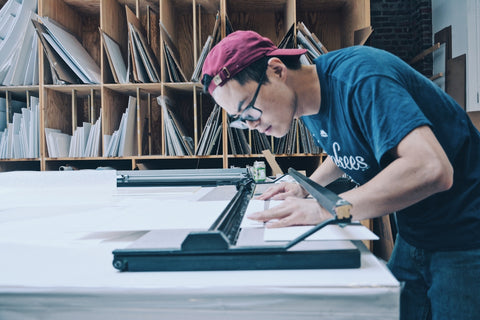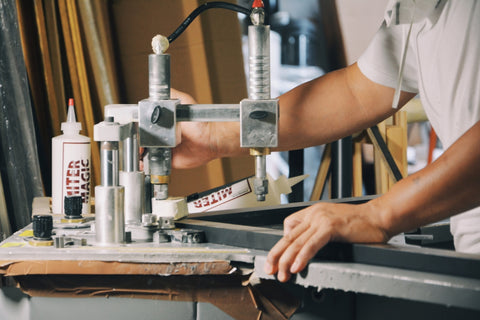As for framing artwork, there is a variety of lingo and terms to learn: rabbet, moulding and points, to name a few. Today we gonna discuss about part of them including matting, glazing, spacers and mounting artwork and board types, which is also about the framing process that 567 framing works on.
Matting
Although matting is not mandatory for every piece of artwork, it does wonder for most. We will stress on the importance of mats in this article.

Before you start to get creative with colors and textures, decide whether a mat will enhance the artwork. By adding a mat, you do the following: enlarge the overall size of the frame, pick up parts of the artwork that are not immediately noticeable, highlight colors, make it “pop”, help to “hide” uneven or damaged edges of the paper, and improve the overall appearance of the artwork.
The brands we carry include:
- Peterboro
- Crescent Ragmat
- Bainbridge
- Rising
- Artique
Within these brands, they supply 2-ply to 8-ply thicknesses, whitecore/blackcore, acid free (cotton), museum quality, linen lined mats, textured, and a wide variety of colors and whites.
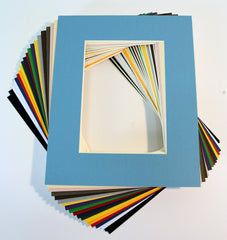
Mats are normally cut with a 45-degree inner bevel to show depth. Straight cuts or reverse bevels can be done as well. Any type of mat can be used for multiple window openings and double matting as well.
To add even more finesse, 567 framing also offer inner fillets. They can be attached to either the mat or the frame itself. They’re basically decorative trims and more traditionally used. Most people nowadays prefer the simplicity of using a mat instead.
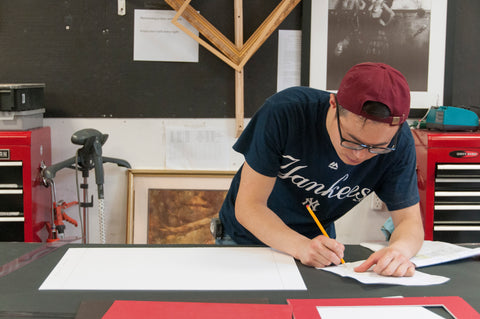
Glazing
We often get asked this question: which glass type do you recommend? This is a perfectly legitimate question whether you have experience with framing or not. Below we will go through the basics of choosing the correct glass or plexiglas type for your artwork.
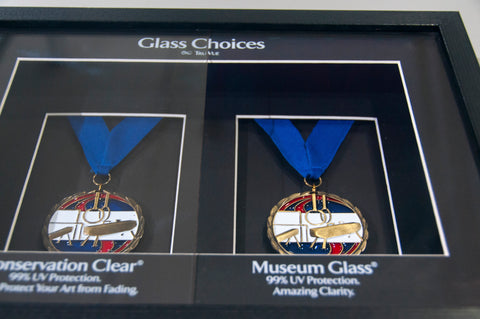
Several factors go into choosing the right glazing; preservation of the artwork, amount of reflection control, size of the over frame (maximum glass size is 48x68, although we would recommend to use acrylic for anything over 36”x48”), and of course budget.
Regular or basic glass or plexi – it is a clear glass that does not offer anything protection or non-reflective coatings, basically it’s used to keep dust out.
Conservation Clear AKA UV glass or plexi – true UV protected glass filters out 96% or more of harmful UV rays. It is recommended using to preserve any type of artwork.
Nonglare glass or plexi – the traditional nonglare glass has a slight fogginess to it and may be okay to use with watercolors and the like. Not recommended for use if there is a gap between the glass and artwork.
Reflection Control Tru Vue UltraVue glass – this is our standard nonglare glass. This eliminates 98.5% of light transmissions and is 65% UV blocking. We will only use the regular nonglare glass is when requested.
Nonglare + UV plexi – this is a combination of the traditional nonglare and UV filtered acrylic, not to be confused with Museum quality acrylic.
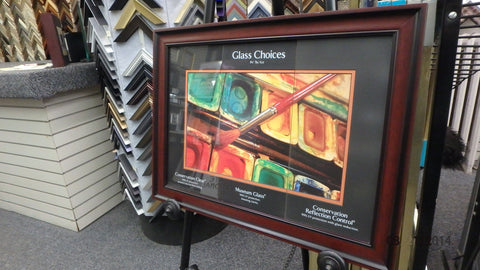
Museum Glass or Optium Museum Acrylic – this blocks up to 99% of indoor and outdoors UV rays. There is no comparison for clarity.
If budget is no issue, then go for the best!
Spacers
This small hidden item deserves its own category because it’s crucial for most frame jobs.
The spacer is the literally the space between the glazing and the artwork. What good is Museum glass if the $5,000 photograph ended up stuck to the glass? This is where the hero, spacers come into play. A mat is also used as a pacer” be“scause it keeps the artwork from contact with the glass.
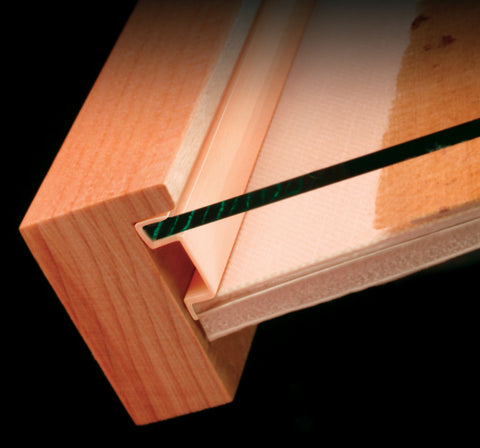
Most spacers are premade at 1/8” or 1/4”. For shadowboxes, the spacers are built with materials such as foamboard or mats. You can also get creative with spacers. They can be the same color as either the frame or mat, or something entirely different. It usually is in between the glass and artwork, or in the case of a matted shadowbox, it is between the mat and artwork where the mat is touching the glass.

Whenever a mat is not being used, it is always a rule of thumb to ask a customer if they would like a spacer. We definitely recommend it!
Mounting Artwork and Board Types
We will advise on what and when it is appropriate to mount something. We use a process called “drymounting”. Yes, wetmounting is also used but we do not have these services. We also do not use sprays. These two methods can create lumps, bumps and bubbles. Thus, creating imperfectly flat artwork.

There are two types of drymounting methods. Both are permanent processes, meaning it cannot be reversed. One requires using a heat press; where your artwork is first attached to a mounting board with a dry adhesive that activates with heat. The other is a rolling press where there is no heat. It is also for mounting larger pieces of artwork and temperature sensitive artwork (such as photographs).
Drymounting is a non-archival method for mounting artwork and is not recommend for high art valued or one-of-a-kind artwork.
Board types we offer:
- Museum board (8-ply)
- Foamcore (black, white, 3/16” – 1/2”)
- Gatorboard (black, white, 3/16” – 1/2”)
- Sintra or PVC (black, white, 3mm – 6mm)
- DiBond or aluminum (3mm only)

